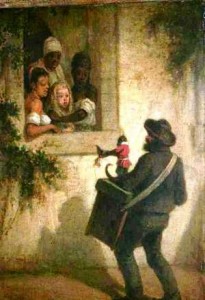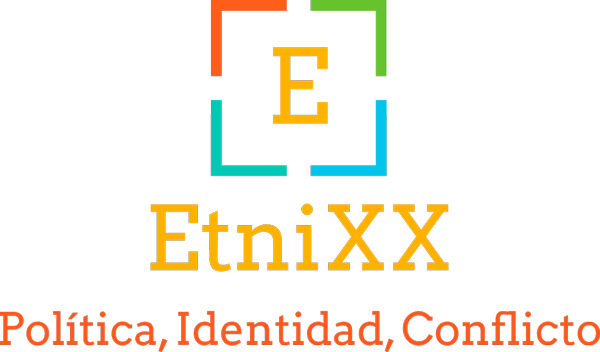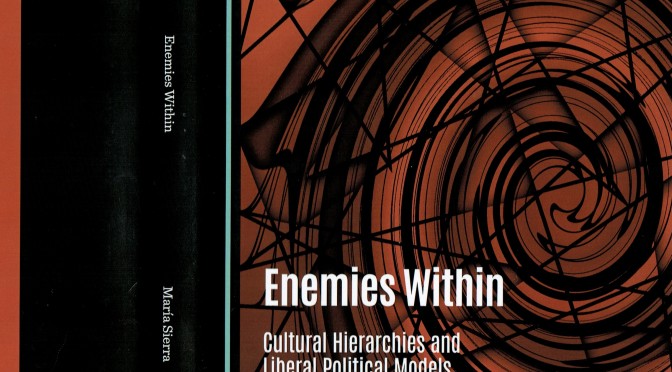Can citizenship rights be denied to significant groups in a society that regards itself as civilized and self-governing? Is it possible to exclude such people in the name of freedom and reason? Is it plausible to explain classifications that differentiate between first- and second-class citizens as “natural”?
This is the paradox inherent in modern politics, born of the revolutions that ended the Ancien Régime in the western world. Throughout the nineteenth century and at the beginning of the twentieth, liberalism inspired a representative form of government that appealed to citizenship, yet marginalized many social groups, including natives, women, immigrants, workers, slaves and nomads. In the Hispanic dimension of the Atlantic world that this book deals with, modern politics was based on exclusions explained as natural and necessary. In both Europe and America, a distinction was made between the responsible citizen and those “others” in society, potential “enemies within”, who had to be controlled and supervised.
Our new book explains the success o this political operation by analysing the historical construction of figures of alterity that were fundamental to the definition of national civic identities. Its basic premise is that imaginaries that were constructed in the nineteenth century can be found even today in western political conceptions. The cultural complexity of enduring political images is revealed by exploring the inner workings of virtuous figures in relation to their opposites: readers will find the mosaic of representations of civic alterity both recognisable and surprising; the former because they refer to model representations that have seeped into the common imaginaries of our societies, and surprising insofar as the book offers new interpretations pertaining to the interconnectedness and performativity of these identities.
the definition of national civic identities. Its basic premise is that imaginaries that were constructed in the nineteenth century can be found even today in western political conceptions. The cultural complexity of enduring political images is revealed by exploring the inner workings of virtuous figures in relation to their opposites: readers will find the mosaic of representations of civic alterity both recognisable and surprising; the former because they refer to model representations that have seeped into the common imaginaries of our societies, and surprising insofar as the book offers new interpretations pertaining to the interconnectedness and performativity of these identities.
The contributors to this volume provide historical perspectives on the debate on political legitimacy in open societies. Reinventing democracies involves understanding the historicity of inherited formulae of governance and considering them, therefore, as amenable to improvement. The readiness to do this is not a threat to democracy but, rather, a commitment to looking for it.
Table of Contents
- Introduction, “Enemies Within: Beware of the Neighbour,” by María Sierra-Alonso
- Chapter One, “The Peruvian Native and the Conception of Liberal Citizenship in the Latin American Context,” by María Antonia Peña and Rafael Zurita
- Chapter Two, “What Should Be Done with the Foreigner in Argentina?: From “Object of Desire” to “Enemy Within,” by Marta Bonaudo and Diego Mauro
- Chapter Three, “Central American Female Writers: Women Occupying Liberal Public Space,” by Cristina Ramos Cobano
- Chapter Four, “Body to Body with the Liberals: The Association Movement of the Coloured Race in Cuba,” by Pilar Pérez-Fuentes Hernández
- Chapter Five, “A Stranger in the House: the Latino Worker in the United States in the Transition from the Nineteenth to the Twentieth Centuries,” by Susana Sueiro Seoane
- Chapter Six, “Cannibals Devoured: Gypsies in Romantic Discourse on the Spanish Nation,” by María Sierra-Alonso
View extract
Enemigos internos: jerarquías culturales y modelos políticos liberales en el mundo hispánico
¿Pueden negarse los derechos de ciudadanía a grupos importantes de una sociedad que se considera a sí misma civilizada y autogobernada? ¿Es posible excluir en nombre de la libertad y de la razón? ¿Se puede resultar convincente explicando lo “natural” de clasificaciones que diferencian a ciudadanos de primera y segunda clase?
Esta es la paradoja interna de la política moderna, la política nacida de las revoluciones con las que terminó el Antiguo Régimen en el mundo occidental. A lo largo del siglo XIX y comienzos del XX, el Liberalismo inspiró un tipo de gobierno representativo que, aún apelando a la ciudadanía, marginó a muchos grupos sociales: indígenas, mujeres, emigrantes, trabajadores, esclavos, nómadas… En el mundo atlántico, que este libro atiende  en su vertiente hispana, la política moderna se apoyó en una serie de exclusiones que fueron explicadas como naturales y necesarias. Tanto en Europa como en América, se diferenció entre el ciudadano responsable y aquellos “otros” que debían ser controlados y dirigidos, potenciales “enemigos internos” de la sociedad.
en su vertiente hispana, la política moderna se apoyó en una serie de exclusiones que fueron explicadas como naturales y necesarias. Tanto en Europa como en América, se diferenció entre el ciudadano responsable y aquellos “otros” que debían ser controlados y dirigidos, potenciales “enemigos internos” de la sociedad.
Nuestro nuevo libro explica el éxito de esta operación política analizando la construcción histórica de una serie de figuras de alteridad que fueron fundamentales para la definición de las identidades cívicas nacionales. Su premisa básica es la de los imaginarios cívicos que fueron construidos en el siglo XIX todavía persisten en las concepciones políticas del mundo occidental. Se exploran el proceso de construcción de figuras políticas virtuosas en oposición a figuras de alteridad, con la intención de revelar la complejidad cultural de imagines que han perdurado tanto. La investigación proporciona un mosaico de figuras del “otro” que resultarán a la vez reconocibles y sorprendentes para el lector: reconocibles por cuanto remiten a representaciones modélicas que han permeado en el sentido común de nuestras sociedades; sorprendentes porque el libro ofrece nuevas interpretaciones sobre la interconexión y la performatividad de estas identidades.
Con ello, los autores quieren contribuir, como historiadores, al debate urgente sobre las formas de gobierno y la legitimidad política en las sociedades abiertas. Reinventar la democracia implica entender la contingencia –la historicidad de las formas de gobierno que hemos heredado y, en consecuencia, estar dispuestos a cambiarlas para mejorarlas. Estar dispuesto a ello no es amenazar la democracia sino apoyarla.



